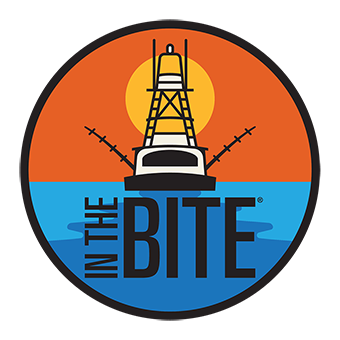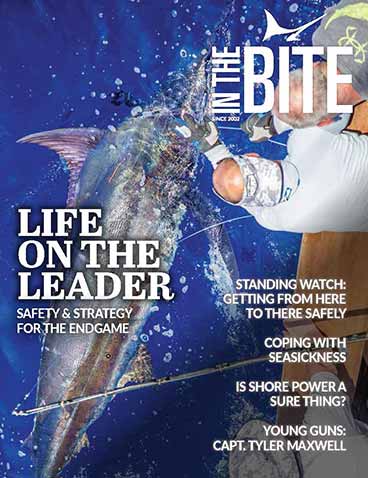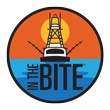We do good things for ourselves so why not extend the courtesy of a wish list to your nice sportfish boat? After all, this is the same boat that gets you out and back to the fishing grounds and provides comfort while fishing. It also looks great at the dock!
 Here are a few great items to consider¦
Here are a few great items to consider¦
Foulfree: No More Transducer Face Slime
Designed by the industry-leading engineers at Propspeed, Foulfree reduces marine growth on the faces of transducers. Designated by AIRMAR as a certified transducer coating, Foulfree reduces the maintenance needed to keep transducers clean. Not only does the product improve transducer performance, but it improves water flow beneath the hull. Just why is transducer face fouling such a nasty problem? Fouling can reduce a transducer sensitivity and create bottom-echo returns and positive fish targets. Transducers perform best with minimal turbulence over their surface during operation. Foulfree is a specialized foul-release coating that is biocide-free and does not poison marine growth. Once cured, Foulfree forms a super-slippery surface over the transducer, preventing marine growth from attaching to its surface. The coating boasts a long service life”a minimum of 12 months, even longer life span in cooler climates. Prior to Foulfree, the only solution to keep marine growth from fouling a transducer face was regular cleaning and or the application of a water-based bottom paint. Neither of these solutions were great, but we learned to live with them. If the track record of the popular Propspeed product is any indication, this new Foulfree product, available in spring 2020, should eliminate the need of constant maintenance of transducer faces. Foulfree is an exciting new coating specifically made to enhance the performance of transducers, said Chris Baird, CEO, Propspeed. Bringing together our revolutionary product design and working with the experts in transducer functionality from AIRMAR, we are able to offer boaters around the world a new solution to an age-old problem and improve sonar performance for anglers and cruisers alike.
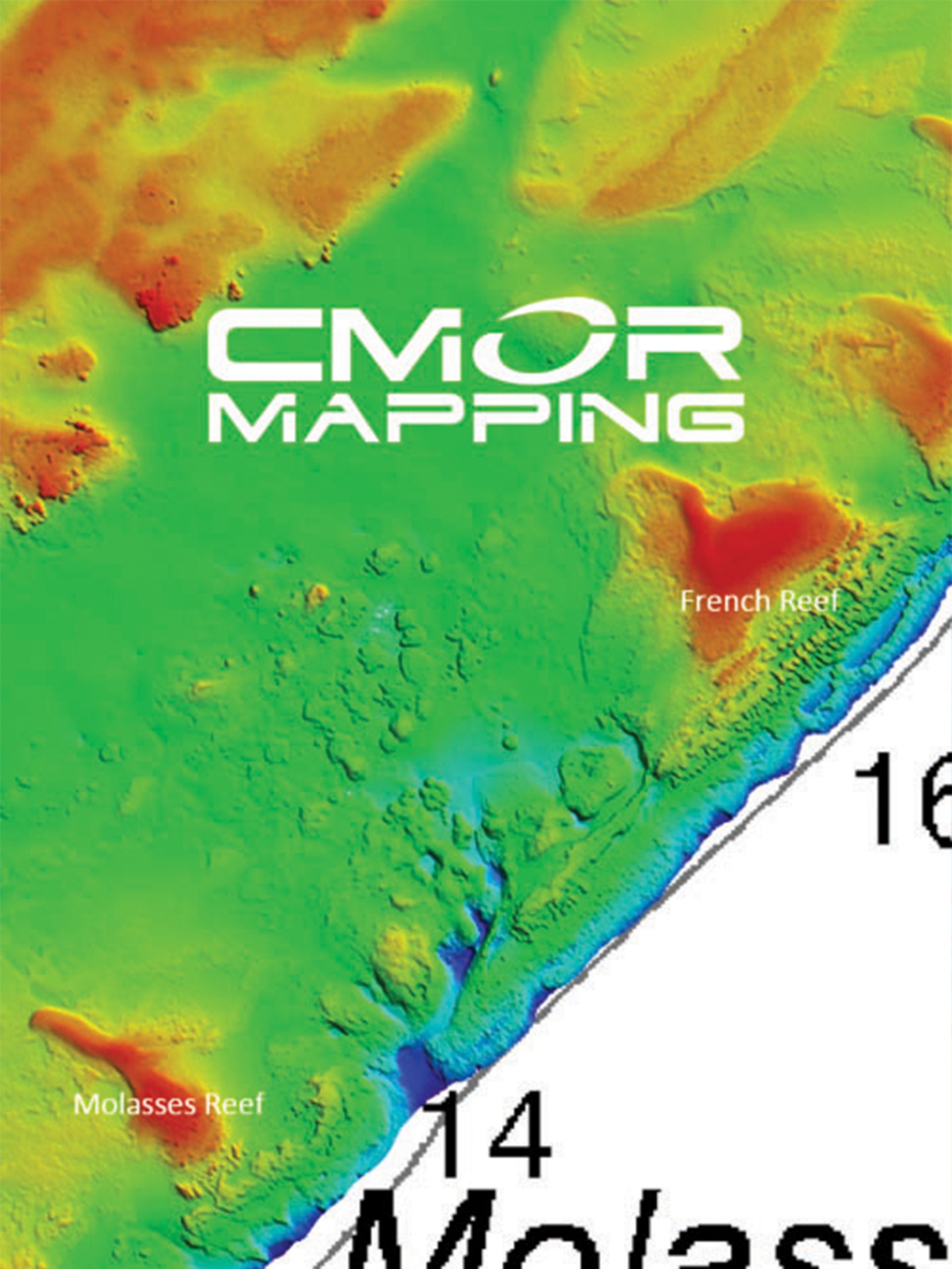
The mapping capabilities of chartplotters have come a long way in the past couple of years.
Detailed Bathymetry Charts: Making the Modern Chartplotter That Much Better
With the amount of satellite mapping technology available these days, there is a new push to integrate the most high-tech imagery into modern chart plotters. There is indeed a gold rush going in in the race to repurpose highly detailed bathymetric sources into data that is useful in the world of plotting course. Why wouldnt there be? CMOR is one of the first companies to have aggerated this data into a user-friendly product for multi-function displays. Simrad was the first brand to incorporate the CMOR charts, but they now work well with many brands of chartplotters. Not to be outdone, other chartplotter manufacturers and cartography companies have been feverishly working to provide similar bathometric data within their cartography offerings. Much of the coastal bathymetry data is acquired using aerial LIDAR (Light Detection and Ranging). LIDAR bathymetry systems use pulsed blue-green lasers in aircraft to measure ranges to the sea floor below the water surface. The range measurements are combined with position and orientation data to obtain accurate, 3D spatial coordinates of points on Earth surface. Most marine charts that incorporate LIDAR data information display the seafloor in shaded relief views, often with different colors for varying depths. This makes it easy for the captain to see the edges, drop-offs, walls and other distinctive features of the seabed below the boat. This helps to provide the 3D look to these modern charts. One of these modern chart plotters, equipped with the latest and most detailed bathymetric data, would make any boat that much better. Why not put one on your sportfish wish list?
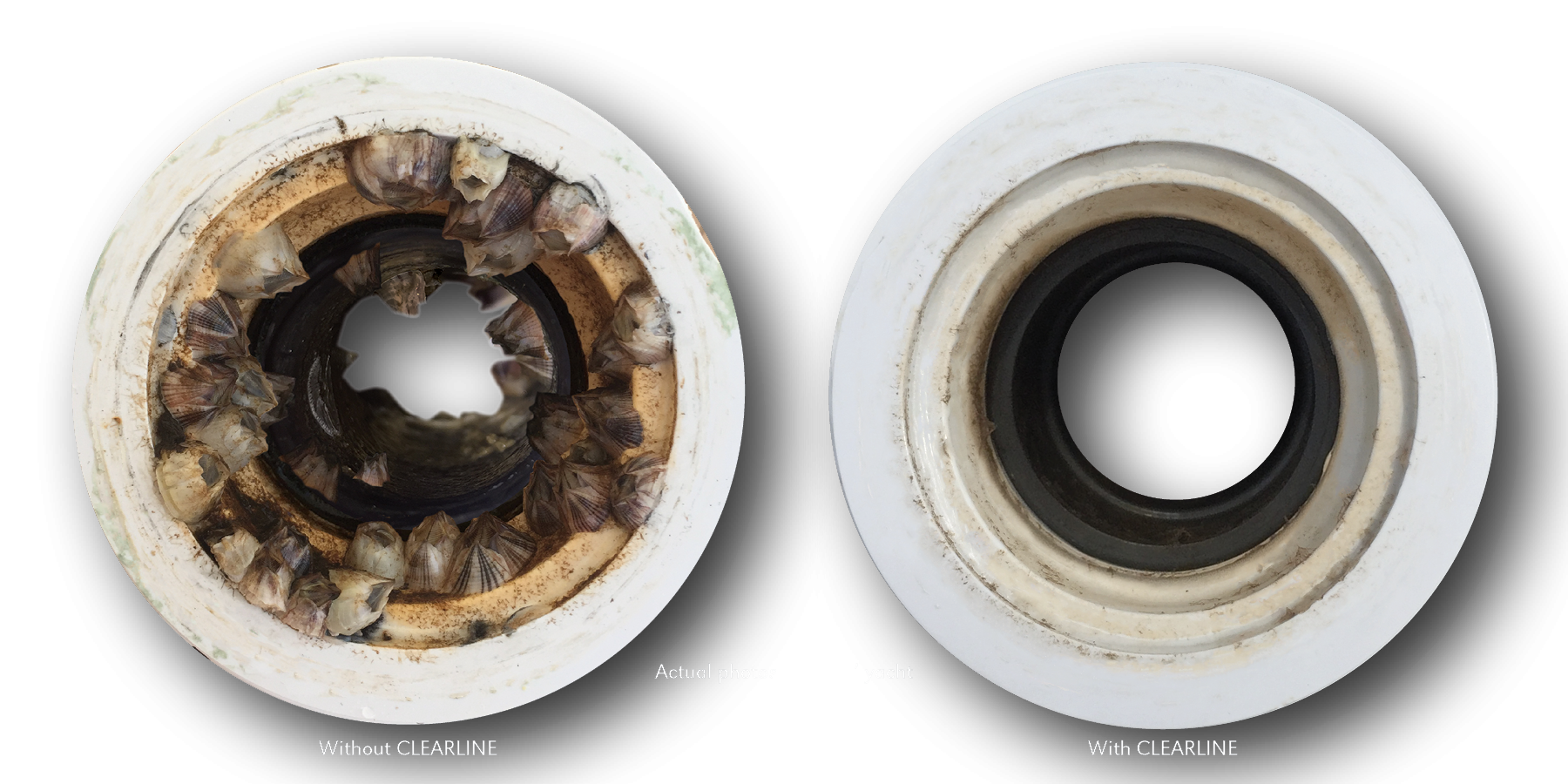
Keeping your lines clean is important, ElectroSea ClearLine makes it easy.
CLEARLINEâ„¢ System: An Ingenious Solution to an Age-Old Problem
How often do you need to clean the seawater cooling systems on your boat? Seawater is the most popular way to cool refrigeration systems, air condition systems, stabilizing systems and other on-board heat generating equipment. Even the newest cooling systems (that cool with a fresh water loop) have a seawater heat exchanger that needs to be cleaned. Microorganisms living in saltwater can attach themselves to the seawater plumbing systems. Such growth can create a buildup of marine growth and eventually restrict or even stop the flow of water in your system. While the degree and rate of growth are very dependent on where you keep and how you use your boat, this is an issue faced by nearly all sporfish boats”no matter how meticulously cared for. Over the years, many ideas and techniques have been tried to reduce or eliminate the growth. The most efficient way to keep the systems operating at their most efficient was to schedule regular cleaning. Not only are such cleanings time consuming and expensive, but there is always a chance of damage when removing and reassembling manifolds, piping, valves, etc. The CLEARLINEâ„¢ System by Electrosea is an ingenious solution to the barnacle problem. Their approach is not to remove them”but to prevent them growing in your raw water lines in the first place. The system incorporates a specialized sea strainer that uses a small amount of electricity, regulated by a computerized control unit with external sensors to monitor the seawater system. This control system can even integrate with sophisticated boat systems such as the OctoPlex used on Viking Sportfish boats. The specialized strainer is an electrochlorinator, producing controlled amounts of chlorine from the seawater itself. Not only is this low level of chlorine compatible with copper nickel, titanium and other marine alloys. It also eliminates barnacles, biofilm, and marine scale from growing inside the seawater piping systems. The chlorine level is similar to that found in tap water. Customers starting with a descaled or new seawater system have reported little or no growth during regular scheduled maintenance.
New Class B+ AIS Systems: Better AIS for the Traveling Sportfisher
One of the best navigation and safety systems since the invention of maritime radar, AIS (Automatic Identification System) is a widely used maritime identification system. Initially, there was a powerful and expensive Class A AIS system for the largest regulated commercial vessels and a less powerful and less expensive Class B AIS for smaller, less regulated vessels. It was these Class B AIS systems that were voluntary installations often found on sportfish boats. (Note both of these systems are transceiver they transmit and receive information. There are many receive-only systems that are very beneficial but not discussed here.) A new regulation a few years ago allowed for a new, third AIS system. This new system, fitting somewhere in-between the two current offerings, is sometimes referred to as Class B+ or Class B SOTDMA or Class B 5W. Why is this new offering important? The Class B+ has over twice the transmit power and range of the original Class B (it 5 watts of power doubles the transmit range to 10-15 miles). Most important for sportfish vessels, the Class B+ uses the same technology of the Class A AIS for sending messages. It has the same top priority when it comes to reserving a transmission time slot in the AIS airwaves, guaranteeing that it will always be able to transmit, even in busy AIS congested waters. For fast moving boats this is important as a missed Class B transmission can result in a vessel moving a long distance before it next manages to send a transmission. (Note if you are wondering if your vessel is required by the USCG to have an AIS system, you can review the regulations here: www.navcen.uscg.gov/?pageName=AISRequirementsRev.
Satellite TV: A New Path for International TV Watching
It seems that most tournament sportfish are equipped with the latest and greatest satellite communications systems. Satellite communication services such as TV, phone and internet are now commonplace. When traveling outside of the US coastal waters, satellite TV service can become complicated and expensive, not matter what type of antenna your vessel is equipped with. In the past, many sportfish boats have had two sets of satellite TV receivers, one DirecTV set for coastal USA and one set for Latin America DirecTV. A few years ago, Latin America DirecTV changed its coverage area and decreased its English language programming to only a few channels. The result? Watching English language television in Latin America became more complicated and expensive than it had been in the past. So why is satellite TV on this wish list? It is now much easier and less expensive to receive American TV service with a standard marine satellite TV antenna that you may already own. You can eliminate the expensive LNB change-out needed when traveling away from the coastal USA. The DISH network offers a month-to-month service for subscribers, making it easy to change service to DISH while out of the USA. The DISH TV network has some great coverage in the Caribbean and Latin America using a single satellite, while not a duplicate of what available on the three DISH satellites in the USA, but a very good offering when away from home. DISH service has traditionally not been very popular with boaters in the USA due to the need to switch between three satellites while changing HDTV channels”as compared to specialized antenna systems from KVH and Intellian that can easily track the three DirecTV HDTV satellites at the same time. Most marine satellite TV antennas can be easily re-programed to track a single DISH satellite covering the area where you are traveling. While you may need to slightly re-configure the coax cables to the receivers, anything you need to do now pales in comparison to the antics that were necessary in years past to switch to DirecTV Latin America. Before cutting the cord, check with your local marine electronics company to confirm compatibility. Most 18 and larger satellite TV antennas can receive DISH throughout the Caribbean and Central America. Heading farther east towards the Dominican Republic will require a larger 24 antenna. After switching to DISH, many boaters decide to keep the service, since it has continuous coverage in the coastal USA and therefore does not require changing of service or equipment when traveling. (Recently a boat equipped with a basic KVH TV6 24 satellite antenna was able to travel from the Mid-Atlantic area, to Florida and Dominican Republic, watching DISH along the way, without changing antenna settings, receivers, etc.) If you are traveling even farther from the USA, check the coverage maps with your antenna manufacturer. These maps will show you what service can be received with your size antenna in a given geographic area. You will likely need specific receivers for the TV providers for that region of the world. For a single source worldwide solution, KVH has a service exclusively for TracPhone® V7HTS/V11HTS owners. It is the subscription based HTS Entertainment Bundle”which includes hundreds of hours of the most popular TV shows and classic movies. This bundle doesnt require a satellite TV antenna”it receives entertainment sent by a data feed into a specialized receiver during the off hours without a data charge.
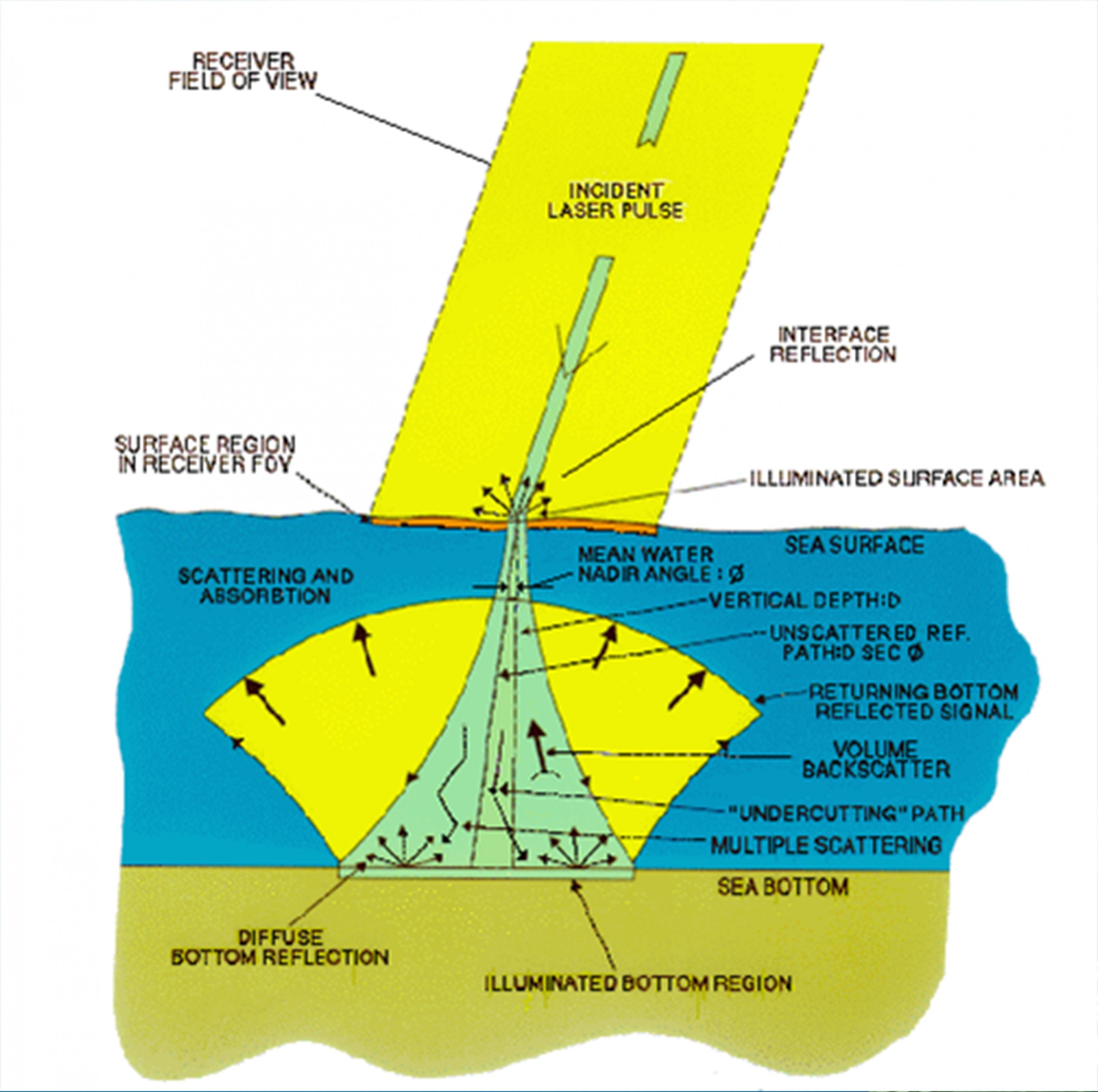
The LIDAR process illustrated graphically.
Where have LIDAR Charts Been?
LIDAR has been used for land surveying for years. Why has it taken so long for the bathymetric data end up on marine charts? It expensive compared to land LIDAR, the lasers are much more powerful, operate on different wavelengths and the water needs to be clear to get a good bottom reading. Aircraft have to wait for the right conditions, fly low and slow to get the laser beam to penetrate to the sea floor and extract meaningful data.
Bathometric LIDAR has a maximum depth of about 25 fathoms, for deeper water seafloor, data is gathered using Multibeam Bathymetry. Instead of just one transducer pointing down, multibeam bathymetry systems have arrays of transducers, sending out a fan shaped sonar energy to cover a large swath of bottom, usually covering a distance on either side of the ship that is equal to about two times the water depth.
Here in the USA, NOAA department of National Center for Environmental information (NCEI) is the national archive for multibeam bathymetric data and holds more than nine million nautical miles of ship track line data recorded from over 2400 cruises and received from sources worldwide. In addition to deep water data, the Multibeam Bathymetry Database (MBBDB) includes hydrographic multibeam survey data from NOAA’s National Ocean Service (NOS). Some of the information has been used in marine cartography for years, but more recently additional more detailed data has been included in marine charts used with popular sportfish marine electronics.
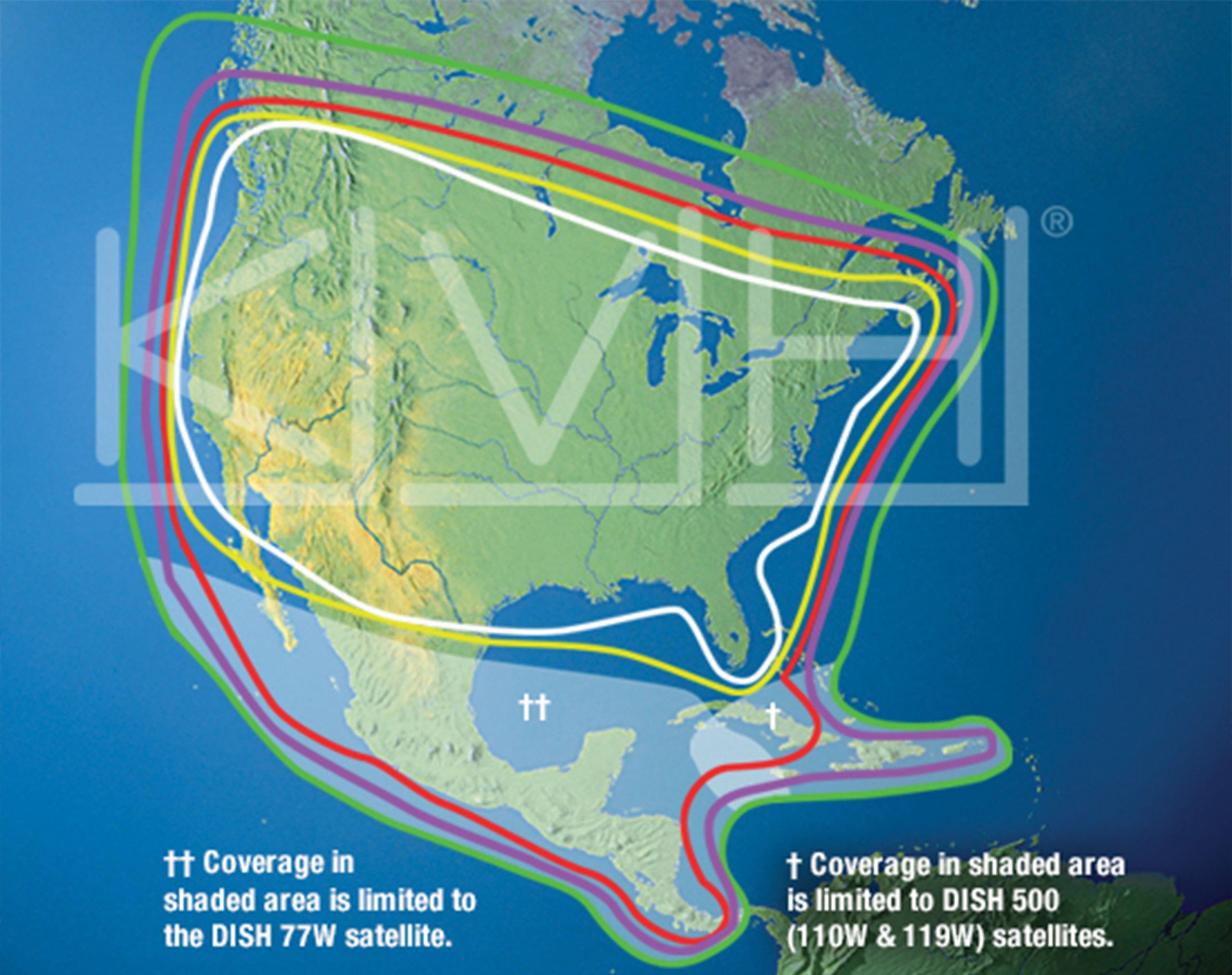
Satellite TV Antenna
If you are in need of a new satellite TV antenna, KVH recently introduced a new 24 antenna that can do it all”the TracVision® UHD7. This system can simultaneously receive broadcasts from three Ku- and Ka-band DIRECTV® satellites to deliver HD and UHD programming (4K), full DVR support, local channels, and uninterrupted reception, even in the roughest seas. Plus, it features built-in support for DISH Network and Bell so you can get the entertainment you want whenever you want. Captain Steve Katz is the owner of Steve Marine Service Inc in Ocean City, Maryland. He is the Vice Chairman of Board of Directors”National Marine Electronics Association (NMEA) and holds ABYC Master Technician certification, NMEA AMEI, NMEA2000 certificates along with factory training from many manufacturers. To contact Steve, email [email protected] and we’ll be happy help.
